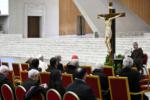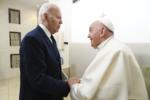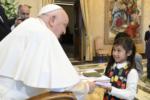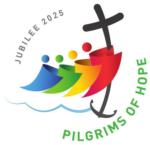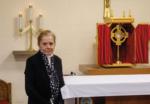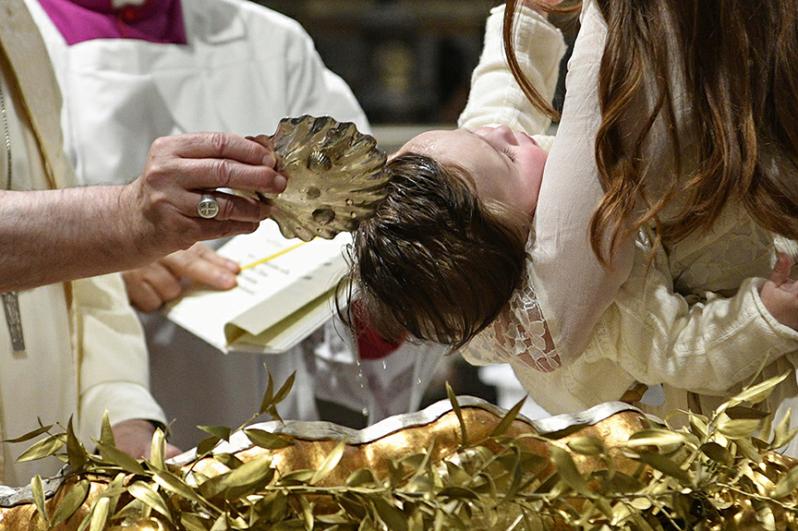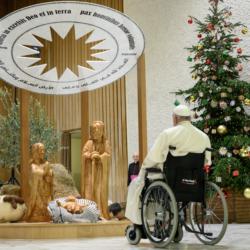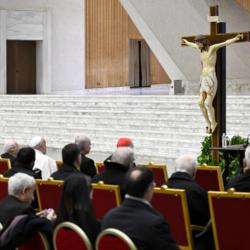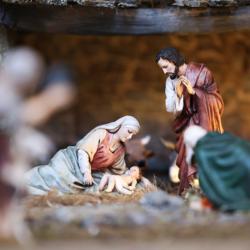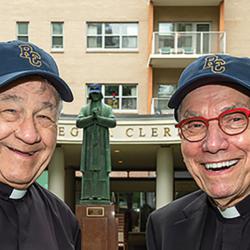Initiating new Catholics -- infants and children
Until 1970, infants and children who were baptized in the Roman Catholic Church received the sacrament in a ceremony that was an adapted version of the Rite of Baptism for Adults. Some will remember or will have heard about those celebrations. The parents and godparents brought the infant to the Church, likely on a Sunday afternoon about 1 p.m. There was a series of individual celebrations, largely conducted in Latin and later in English. Some actions probably seemed odd (such as salt on the baby's tongue), some words seemed ill-suited to infants, and perhaps most strangely of all, the questions were addressed to the infant while the godparents provided the answers.
The Rite of Baptism for Infants, which also included children up to the age of seven, was a great improvement, as it recognized that these were infants entering the Church and that the parents, primarily, and the godparents as assisting, would be responsible for the formation by words and deeds of their child in the ways of the faith.
As with all the reformed rites, it also emphasized the communal aspect of the sacrament. The child is entering the Church of God by this sacrament and the whole Church is there both to celebrate and assist the parents in the formation in faith of the newly baptized. Additionally, preference is given to celebration of the sacrament of several children and even, at least occasionally, at a Sunday Mass.
Continuing the response to the call for the reformed rites to be enriched by an increased proclamation of the word that is biblical readings at any celebration of baptism. In addition to the communal aspect of the celebration, the preference for the celebration on Sunday is emphasized as a means of teaching about the entrance into the Paschal Mystery, which is celebrated as "the little Easter" of each Sunday.
The first version, both in the original Latin and in the English translation, has been updated and a revision was published across the English-speaking world in 2020. It has a new title: The Order of Baptism for Children.
That new word, "order," is chosen because the text is really a volume of separate rites. Both the structure of each rite within the book and the ordering of the rites has been maintained. In the various versions, there are appendices outlining the format for celebration of baptism at Mass.
All of the texts have been retranslated. Bishops, priests, and deacons, the ordinary ministers of this sacrament, will probably still be getting used to the new language of the texts. The language of the responses for the assembly remains largely the same as the old version.
Of course, all parishes, sacristies, and baptisteries should have copies of the new version (available from multiple publishers) and the old books should be recycled.
Some expectations remain, with a catechesis for parents and godparents being a foundation upon which subsequent parish and Catholic school formation programs can be built. Many parishes have had great success with a catechesis of parents and godparents that is offered before the birth of the child. Not surprisingly, there are now online preparation programs available, which are especially useful with the busy and demanding schedules of families.
This new order is rich in symbols, the principal one being water immediately associated with cleansing, but also as the prayers reference the crossing of the Red Sea by the people of Israel and Jesus' baptism in the Jordan by John.
The supplementary or explanatory rites include anointing with sacred chrism, clothing in a white garment, and presentation of a lighted candle. All of these are accompanied by easily understood words respectively explaining the newly baptized's entry into the Church of God, their having "put on Christ"; and being bearers of the Light of Christ.
Most agree that this order for the baptism of infants and children is among the more successful of the liturgical reforms. Actually, as noted above, it is really a whole new form of celebration of baptism ordered towards infants and children.
This new order, now really more than 50 years old, and its new translation, highlight three aspects of the celebration -- it is an action of the gathered community of the Church; it is rooted in the Word of God; and it emphasizes the newly baptized's entrance into the Paschal Mystery of Christ.

